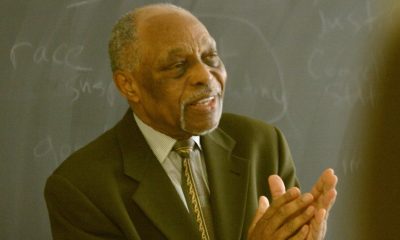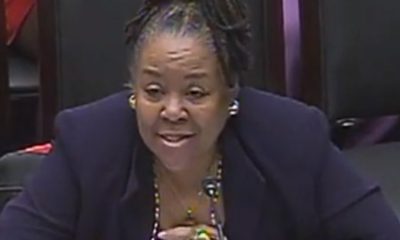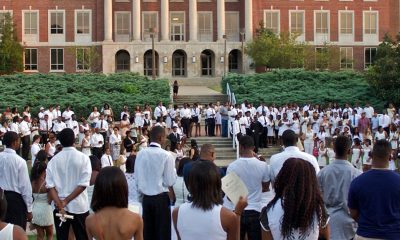Environment
Department of Health Joins Hurricane Exercise to Prep for Upcoming Storm Season
THE WESTSIDE GAZETTE — According to the Federal Emergency Management Agency, Emergency Support Function #8 (Public Health and Medical Services) co-ordinates health and medical services in response to a disaster, emergency, or incident that may lead to a public health, medical, behavioral, or human service emergency.
By Sallie James
The May 9th hurricane exercise centered around the fictitious “Hurricane Smith,” a made-up storm that made landfall as a Category 3 hurricane in Tampa Bay on May 6th. Under the exercise narrative, Broward’s Emergency Operations Center (EOC) was activated at 8 a.m. on May 9th due to heavy rain and high winds that caused widespread flooding and damage to the South Florida region.
The storm spawned several tornadoes, caused a breach in the dike surrounding Lake Okeechobee, and required the opening of several shelters. Emergency responders, which also include the Florida Department of Health (DOH), had to figure out what to do, when to do it and how to get it done.
Did you know the DOH is responsible for medical management and staffing the county’s special needs shelters and coordinating the delivery of medical care in an emergency? During an emergency, the DOH works side by side with first responders like police, fire rescue and hospitals to coordinate resources such as ambulances, hospital beds and other medical resources and services.
Although every scenario associated with the mock “Hurricane Smith” was fictitious, the focus and intensity of the exercise at the EOC was not: More than 200 emergency responders had to think on their feet during the four-hour drill that included an unplanned computer glitch that affected the ability to transmit electronic messages and forced employees from 25 agencies to revert to the use of paper messages and talk face-to-face to arrange services and find solutions to help people in need.
Hurricane Season 2019 began June 1st and ends November 30.
“We are health and medical and so anytime there is an incident in the county that could overburden the healthcare system, we get involved,” explained Terri Sudden, Director of Public Health Preparedness for the DOH in Broward County. “If there were a train with multiple injuries, a plane crash or bad accident on I-95 with numerous fatalities, we would respond.”
According to the Federal Emergency Management Agency, Emergency Support Function #8 (Public Health and Medical Services) co-ordinates health and medical services in response to a disaster, emergency, or incident that may lead to a public health, medical, behavioral, or human service emergency.
Exercises like the Hurricane Smith scenario provide an opportunity for emergency responders to practice what they know and learn to ask when they don’t know the answer so they can be prepared when a real event occurs, Sudden said.
“Our job is to exercise those plans and make sure they work and tweak them so they work better,” Sudden noted. “It’s a training exercise to test how resourceful someone can be. You basically do whatever you need to do to be responsive to whatever the need is. It’s also about relationships so you get to know the people at other tables. It gives familiarity as to where everybody is located at the EOC.”
Tracy Jackson, Director of Broward County’s Emergency Management Division, said the hurricane exercise allowed participants to practice their responses and then evaluate them with no adverse consequences.
“We get the opportunity without the stress of a real incident to practice the skills we need,” Jackson said at the end of the exercise. “It gives us the chance to troubleshoot things that work and things that don’t work as well. It also gives us a chance to get input from our partners.”
Jackson opened the exercise by emphasizing the importance of teamwork.
“We can’t over-emphasize how important it is for us to be unified,” Jackson said. “More than 1.9 million people outside this room are depending on the decisions you are going to make.”
Jackson told participants they would have to make decisions even though they might not have enough information and warned there would be no guarantee of success. He urged them to soldier on.
“Our confidence is high in you and in us,” Jackson said.
Participants from across the county sat in chairs at long tables equipped with phones and computers. Drill monitors walked the room, wearing vests that bore names like “evaluator” (they record how projects were accomplished) and “controller” (they provided “injects” or scenarios for the exercise and made sure it maintained its pace).
Participants were instructed to do their best to resolve whatever problems they were given. They made phone-calls, consulted with representatives from other cities and agencies and figured out solutions for complicated problems.
DOH employee James Turchetta, Cities Readiness Coordinator, served as a controller during the exercise and kept his team busy with an array of jarring incidents. His team members were resourceful and determined. They found answers.
“I think overall it went great,” Turchetta said. Jackson’s assessment was similar.
“We are happy with the information we gained, the observations we made and the opportunity to improve,” Jackson said.
For more information about how you can be better prepared for emergencies, visit: http://broward.floridahealth.gov/programs-and-services/emergency-preparedness-and-response/personal-and-family-preparedness/index.html
This article originally appeared in The Westside Gazette.
Activism
Oakland’s ‘Green the Church,’ Others, Host a Climate Revival
On April 20, Oakland’s Green The Church California (GTC) and the Center For Food, Faith and Justice will celebrate Earth Day and present a Climate Revival event titled “Growing Healthy Communities From Soil To The Soul” at McGee Avenue Baptist Church at 1640 Stuart St, Berkeley, CA. The day will include inspiring talks, interactive workshops, networking opportunities, and a special panel on Food Sovereignty and Global Food Resilience.

Growing Healthy Communities from Soil to the Soul in Berkeley
By Y’Anad Burrell
On April 20, Oakland’s Green The Church California (GTC) and the Center For Food, Faith and Justice will celebrate Earth Day and present a Climate Revival event titled “Growing Healthy Communities From Soil To The Soul” at McGee Avenue Baptist Church at 1640 Stuart St, Berkeley, CA,
The day will include inspiring talks, interactive workshops, networking opportunities, and a special panel on Food Sovereignty and Global Food Resilience.
The keynote speaker is Rev. Danté R. Quick, PhD, senior pastor of First Baptist Church of Lincoln Gardens in Somerset, N.J. Quick is well known in the Bay Area, having served for more than 10 years as pastor of Friendship Missionary Baptist Church in Vallejo, CA.
Green The Church, founded in 2010 by Rev. Dr. Ambrose Carroll, Sr., and headquartered in Oakland, helps galvanize Black churches and their local communities and leaders to address issues critical to populations historically disengaged from conversations around pollution and health, climate change, and sustainability and energy efficiency.
The organization collaborates with major environmental, sustainability, food security, faith, and community-based non-profit organizations, and is committed to “creation justice”—care and justice for God’s people and the planet—and building the Beloved Community.
Environmental justice has long been a pressing concern for communities of color who bear the brunt of pollution and ecological degradation. Climate change exacerbates these issues, disproportionately impacting vulnerable communities. Recognizing this urgency, Black churches across the country are taking action.
With deep roots in the African American community and its commitment to social justice, the Black Church has become an essential advocate for sustainable practices and policies.
Over the past 14 years, in a powerful collaboration with significant environmental, sustainability, food security, faith, and community-based non-profit organizations, GTC has created a cadre of Black churches engaging in the environmental justice, climate, and sustainability movement.
GTC presently works with more than 1,000 pastors and congregations across the U.S., and groups in the Bahamas, Ghana, Nigeria, and the UK, showing that we can make a difference together.
The partnership between environmental justice advocates and the Black Church extends beyond individual congregations. Green The Church provides resources and support for faith communities seeking to address climate change and promote environmental justice.
Through collaboration, initiatives such as energy efficiency programs, solar installations, and environmental education have been implemented in Black churches nationwide. These efforts reduce the carbon footprint and save money on energy bills, benefiting the congregations and their communities.
The involvement of the Black Church in the fight against climate change is not just a participation, it’s a powerful message that galvanizes action across communities.
By integrating environmental justice into their ministry, Black churches are demonstrating that addressing climate change is not only a matter of science but also of social and moral responsibility, inspiring change at a grassroots level.
For more information, go to: www.greenthechurch.org.
Bay Area
Richmond’s Growing Bay Trail Boasts Bountiful Beauty
The Standard recently enjoyed a sunny-day stroll through Richmond’s Barbara and Jay Vincent Park and an exquisite section of the city’s ample share of San Francisco Bay Trail. Near Vincent Park’s entrance, the Bay Trail offers locals a front-row view of Richmond’s Marina, with an eclectic mix of boats and some of the city’s shoreline eateries like Lara’s Fine Dining and Anh Restaurant & Bar.
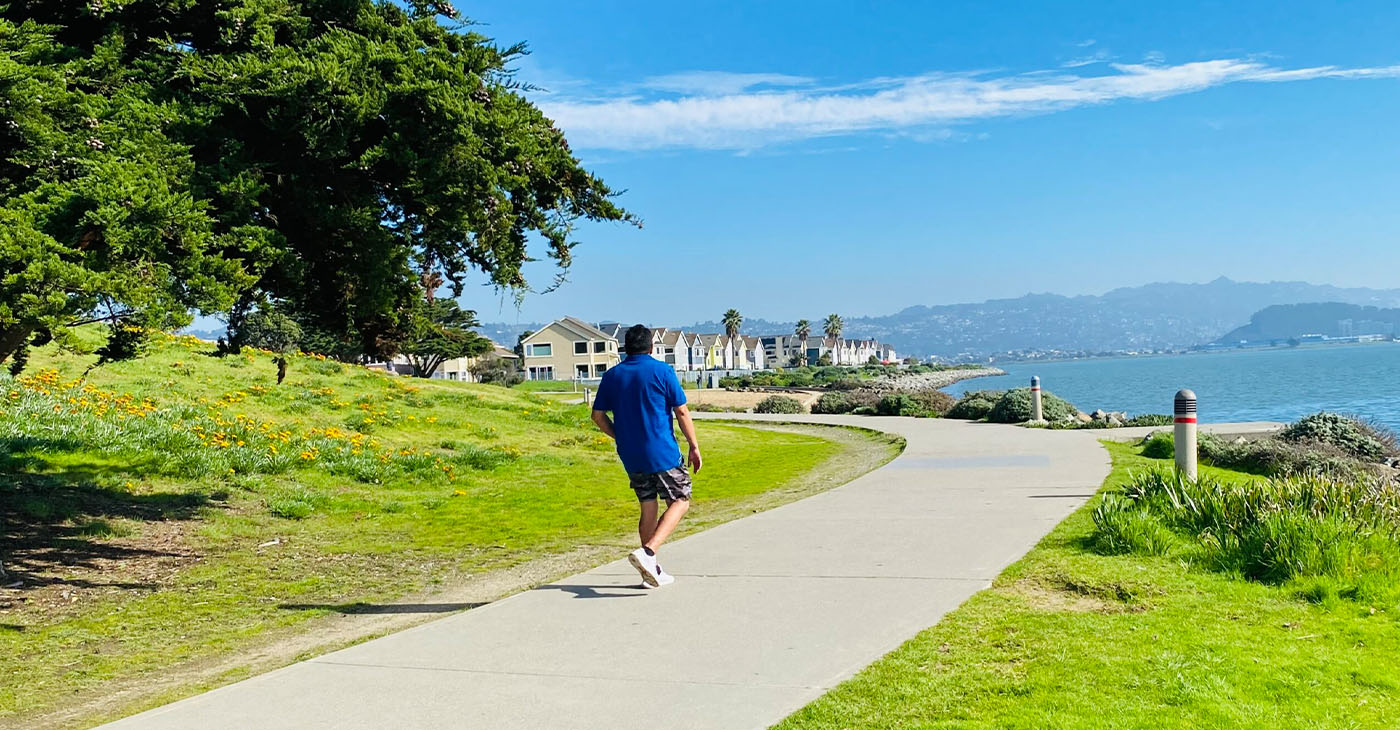
By Kathy Chouteau
The Richmond Standard
When was the last time you used the Bay Trail in Richmond?
The Standard recently enjoyed a sunny-day stroll through Richmond’s Barbara and Jay Vincent Park and an exquisite section of the city’s ample share of San Francisco Bay Trail.
Near Vincent Park’s entrance, the Bay Trail offers locals a front-row view of Richmond’s Marina, with an eclectic mix of boats and some of the city’s shoreline eateries like Lara’s Fine Dining and Anh Restaurant & Bar.
Stroll further into the park on the trail and you’ll spy the Craneway Pavilion and Rosie the Riveter Park’s Visitor Center across the water, as well as ample geese—and if your timing is right—a few sailboarders getting ready to launch into San Francisco Bay.
A great kids’ playground and BBQ grills also await in the well-used park. Follow the trail around the western bend to see the park’s small but picturesque beach and clear-day views of San Francisco, the Golden Gate Bridge and more. The Bay Trail will lead you to Berkeley and beyond if you’ve got the energy.
To this reporter, who has spent lots of time here, Vincent Park and the Bay Trail are some of Richmond’s most stunning outdoor gifts for its people.
‘Gifts’ because our outdoor views don’t cost a thing yet deliver a quiet joy ready to reenergize you for the week. And for your kids and four-legged friends, there’s a world of sea creatures, shells, and other outdoor ephemera to discover after a dig in the sand.
Take it from someone who originally hails from a land-enclosed state, and a city where the most interesting hyper-local views were of the Bethlehem Steel mill in Bethlehem, Pa.
While my native city’s steel might have been used to build the Golden Gate Bridge and WWII ships, and this reporter has deep love for her hometown, trust me when I say that people in ‘the Rich’ are privy to some of the best views I’ve ever seen in our country.
According to the Trails for Richmond Action Committee (TRAC), Richmond has more than 32 miles of shoreline, which is more than any other city on San Francisco and San Pablo Bays. The Bay Trail currently has more than 300 miles completed of 500 planned for the trail around both bays. Enjoy Richmond’s bounty!
Want to learn more about the Bay Trail in Richmond? Check out TRAC.
California Black Media
After Severe Storms Kill 12, State Warns of Ongoing Dangers
State authorities and elected officials around California are thanking 8,500 first responders for their combined efforts over the past weeks to save lives during severe storms that killed 12 people, contributed to intense flooding, led to power outages, downed trees and caused more than $10 million in damages.
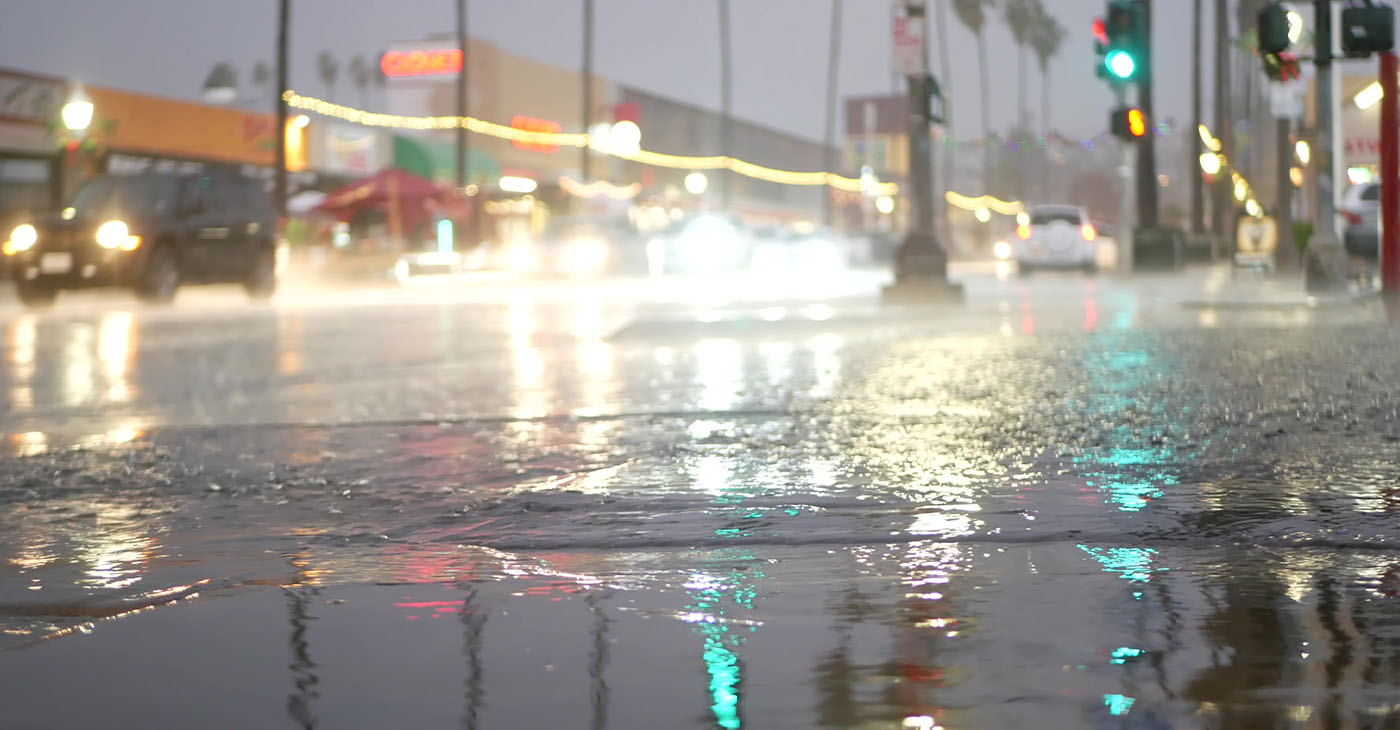
By California Black Media
State authorities and elected officials around California are thanking 8,500 first responders for their combined efforts over the past weeks to save lives during severe storms that killed 12 people, contributed to intense flooding, led to power outages, downed trees and caused more than $10 million in damages.
They are also directing Californians to resources to address losses they may have suffered during the storms and warning them of ongoing dangers.
“We mobilized an all-of-government response, including our swift water rescue teams that have made 47 rescues,” said Gov. Gavin Newsom. “We’re grateful to our thousands of first responders who have saved countless lives and kept our state going in the face of record-breaking rainfall and snow.”
On Feb. 4, the Governor declared a state of emergency in eight counties: Los Angeles, Ventura, Orange, San Bernardino, San Luis Obispo, Santa Barbara, Riverside and San Diego.
On Feb. 7, Newsom followed up by requesting a major disaster declaration from the White House to support San Diego County as it recovers from the storms.
“The late January storm saw record-breaking rain in San Diego, where the worst impacts were felt in lower-income neighborhoods. Many folks saw damage to their life’s work that can’t be recovered without federal support,” the Governor said.
On Feb 10, the Governor’s Office for Emergency Services (CalOES) provided safety tips for returning home aimed at Californians who had to evacuate, including how to deal with accumulated muck, mud and debris.
In Sacramento County, a 63-year-old woman was found dead under a large fallen tree in her backyard.
Effects of recent storms can weaken trees, leading to falling branches or even entire trees, which can cause damage to homes, and vehicles and pose a threat to public safety, according to Cal OES.
The sudden occurrence of toppled trees, fallen branches or uprooted trees saturated by standing water creates hazardous conditions for pedestrians, motorists, power lines and homes.
CalOES is urging Californians to stay informed about whether forecasts, and informed the public that it is still assessing storm damages.
-

 Community2 weeks ago
Community2 weeks agoFinancial Assistance Bill for Descendants of Enslaved Persons to Help Them Purchase, Own, or Maintain a Home
-

 Activism3 weeks ago
Activism3 weeks agoOakland Post: Week of April 3 – 6, 2024
-

 Business2 weeks ago
Business2 weeks agoV.P. Kamala Harris: Americans With Criminal Records Will Soon Be Eligible for SBA Loans
-

 Activism2 weeks ago
Activism2 weeks agoOakland Post: Week of April 10 – 16, 2024
-

 Community2 weeks ago
Community2 weeks agoAG Bonta Says Oakland School Leaders Should Comply with State Laws to Avoid ‘Disparate Harm’ When Closing or Merging Schools
-

 Community1 week ago
Community1 week agoOakland WNBA Player to be Inducted Into Hall of Fame
-
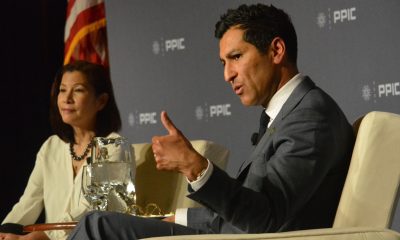
 Community2 weeks ago
Community2 weeks agoThe Year Ahead: Assembly Speaker Rivas Discusses Priorities, Problems
-

 Community1 week ago
Community1 week agoRichmond Nonprofit Helps Ex-Felons Get Back on Their Feet

